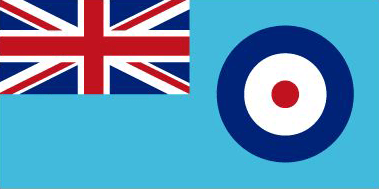Royal Air Force Glider Pilots

The Crossing of the Rhine 24 March 1945 - Operation Varsity
Operation Varsity was the biggest and most successful airborne operation ever. Its purpose was to land 14,000 men of the British 6th and American 17th Airborne divisions on the German held East bank of the River Rhine, on a area five to ten miles wide and five miles deep. The task was to suppress German artillery and small arms fire, which would have opposed 21st Army Group’s crossing of the river, which was a mile wide at that point. Each glider was given the task of landing right on top of its specific objective. 392 Horsa gliders and 14 Hamilcar gliders were used in this operation. Many of the Horsa gliders were flown by Royal Air Force pilots attached to the Army’s Glider Pilot Regiment.
The Glider Pilot Regiment suffered 90% casualties at the Battel of Arnhem and 1,500 RAF pilots were drafted in to the Regiment for the Rhine Crossing. Many of those were very experienced pilots from the rank of sergeant pilot to squadron leader. Army pilots were selected from very tough and skilful solders before being trained as pilots by the Royal Air Force. The RAF pilots drafted into the Regiment had to be turned into tough fighting solders very quickly. This must have been a very unpleasant experience for them but they learned extremely quickly. The immediate prospect of crossing bayonets with a Nazi panzer grenadier “most wonderfully concentrates the mind.”
The RAF glider pilots displayed great gallantry. For example, Squadron Leader Reynolds was flying a Horsa with Flying Officer Bayley as his co-pilot. On his approach to his landing target, Reynolds saw a German four-gun light flack battery shooting at other gliders. He ordered Bayley to take control of the Horsa while he engaged the Germans with a sub-machine gun, firing through the cockpit canopy. He killed or wounded all of the gun crew and took the survivors prisoner after Bayley had landed the glider.
Reynolds then came under fire from a nearby four-gun flack battery and he ordered Bayley to attack it with a PIAT, an elementary anti-tank weapon with an effective range of about 50 yards. Bailey crawled off and scored a direct hit killing the gun crew in the position. Any Army Regiment would be proud to have members like these and the Glider Pilot Regiment Association still has surviving RAF pilots within its membership.
The Glider Pilot Regiment was awarded the Battle Honour “Rhine” for its part in this operation. 60% of the pilots killed in action were RAF pilots attached to the Glider Pilot Regiment.